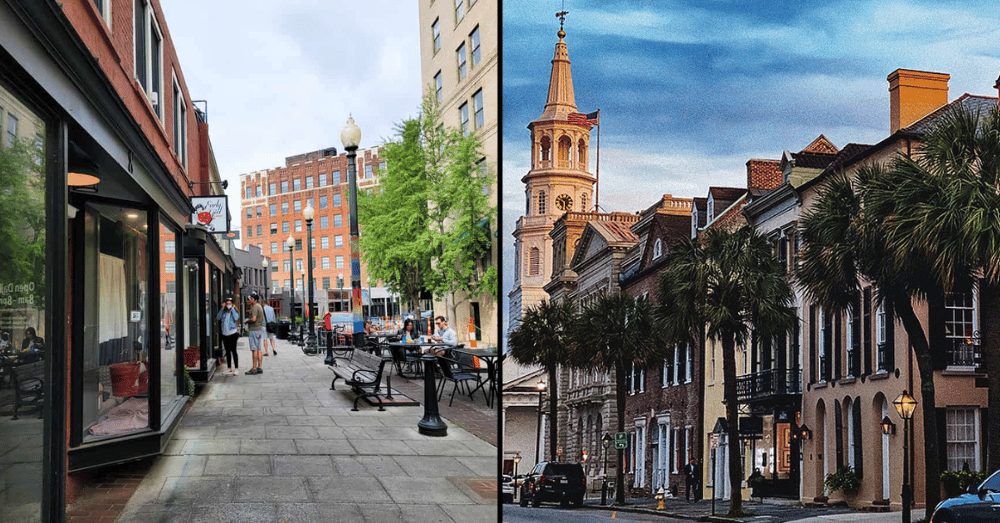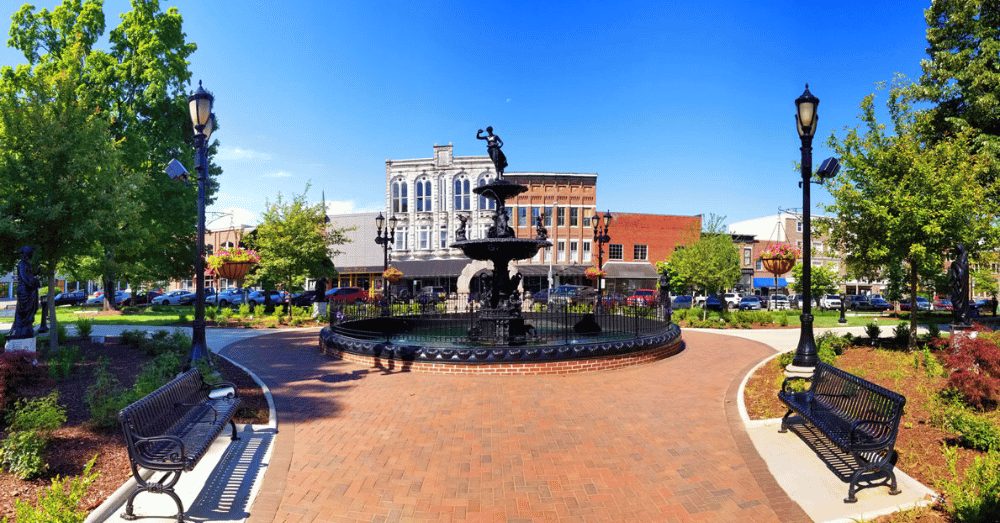Walk through the heart of Bowling Green, Kentucky, and you’ll find something different from the typical American downtown. Same goes for Asheville and Charleston. Each of these cities has carved out its own personality, mixing historic buildings with local shops and restaurants that actually feel local. No cookie-cutter chains here. Just three places doing downtown right in their own way.
- Bowling Green centers around Fountain Square Park, a two-acre green space dating back to 1872 that hosts concerts and community events throughout the year.
- Asheville packs over 200 locally owned stores into its mountain-town downtown, with the historic Grove Arcade as a shopping and dining landmark since 1928.
- Charleston’s King Street stretches through three distinct districts, mixing antique shops, fashion boutiques, and high-end retailers with those famous pastel buildings everyone photographs.
Downtown Bowling Green Gets It Right
Stand in the middle of Fountain Square Park and you’re literally at the heart of Bowling Green, KY. The park sits where a courthouse once stood before it was torn down in 1870. Local residents will tell you this two-acre spot is what ties everything together.
The square connects to Park Row and East Main Avenue, where you can find Spencer’s Coffee, Alley Pub & Pizza, and spots like White Squirrel Brewery. The shops here lean toward locally owned boutiques rather than national chains. Places like Vette City Vintage and Café Kindness give the area its feel. During summer months, free concerts at the park draw up to 7,000 people per show.
The National Trust for Historic Preservation recognized Bowling Green as one of its Dozen Distinctive Communities in 2006. The downtown buildings date mostly from the late 1800s and early 1900s, and many still have their original facades. Western Kentucky University sits nearby, so the square stays busy with students, tourists, and locals throughout the week.
Downtown Asheville Brings the Mountain Vibe
Asheville sits right in the Blue Ridge Mountains, and that mountain culture shows up in everything from the shops to the attitude. Over 200 locally owned stores fill the streets here, plus around 30 galleries showing off local and international art.
The Grove Arcade stands out as a must-stop location. Built in 1928 as America’s first indoor shopping mall, it now houses more than 35 businesses selling everything from handcrafted goods to specialty foods. Walk through downtown and you’ll find shops like Honeypot Vintage with two decades of vintage clothing expertise, Malaprop’s bookstore drawing both locals and visitors, and Charmed Boutique offering affordable fashion for real people instead of just tourists.
Street performers add to the scene. So do the breweries. The area has earned a reputation for both craft beer and craft everything else. What really stands out is how many businesses here are actually owned by locals who live in the area. You can feel the difference when you walk in.

Downtown Charleston Does Elegant History
Charleston takes a more polished approach. King Street runs through the city as its main shopping corridor, split into three sections. Lower King focuses on antiques and art galleries. Middle King brings the fashion district with national brands mixed with local boutiques. Upper King has design stores and a growing food scene.
The pastel buildings everyone talks about? That’s Rainbow Row on East Bay Street. These 13 Georgian homes date back to the 1700s and got restored in the 1930s. They’ve become one of the most photographed spots in the city. The cobblestone streets and historic churches add to that old Southern charm Charleston is known for.
The Charleston City Market spans four blocks and has been part of daily life here since the 1790s. Vendors sell sweetgrass baskets made using traditional Gullah weaving techniques, handmade goods, and local crafts. The market stays busy almost every day, mixing tourists with locals who actually shop there.
Pick Your Style
Each downtown offers something the others don’t. Bowling Green gives you that college-town energy mixed with community events in a park that’s become the town gathering spot. Walk there on a summer evening and you’ll find families, students, and neighbors hanging out like people used to do before everyone stayed home.
Asheville pulls in the artistic crowd. The mountain setting creates a different mood, more laid back but still busy. The shops here feel curated by people who care about what they sell. You won’t find much that’s mass-produced. Everything has a story or a maker behind it.
Charleston leans into its history and does it well. The preserved architecture, the attention to detail, the way old buildings house modern businesses without losing their original beauty. It’s more refined, more polished, and yes, probably more expensive.
Where to Spend Your Afternoon
Pick based on what you want to feel. Bowling Green works if you want that genuine small-town vibe where locals actually hang out in the downtown area. The park concerts and community events aren’t tourist attractions trying to be authentic. They just are.
Choose Asheville when you’re in the mood for creative energy and mountain air. The independent shops, the art scene, the way everything feels a bit bohemian without trying too hard. Plus, you can hit a brewery when you’re done shopping.
Head to Charleston for that Southern elegance and historic beauty. The pastel houses, the antique shops, the way the city has managed to keep its historic district intact while still being a living, working downtown. It’s picture perfect, and it knows it.
All three cities show you don’t need to live in a major metro area to have a downtown worth visiting. Sometimes the smaller places get it right. They focus on keeping what made them special in the first place instead of chasing whatever trend the big cities are doing. That’s why people keep coming back.

